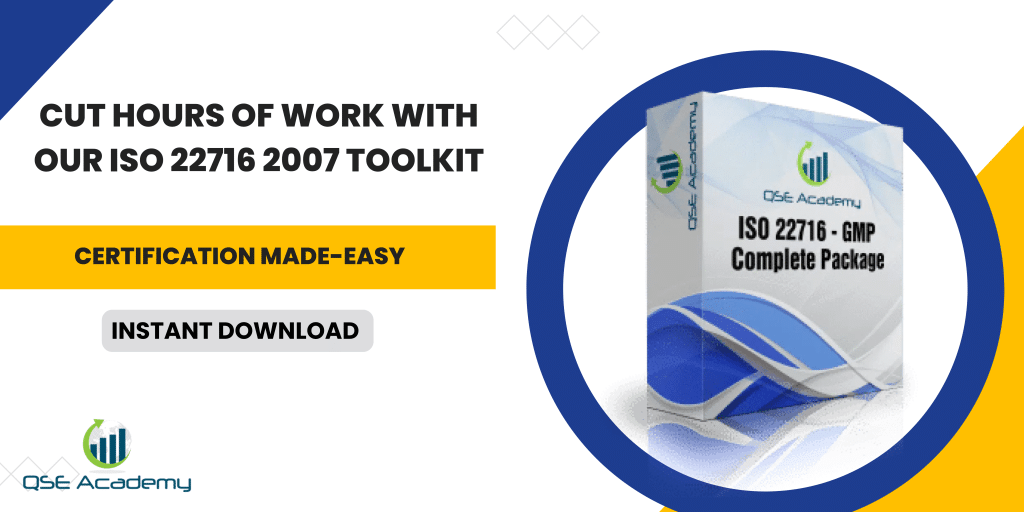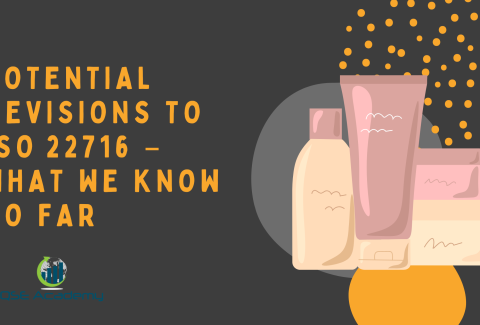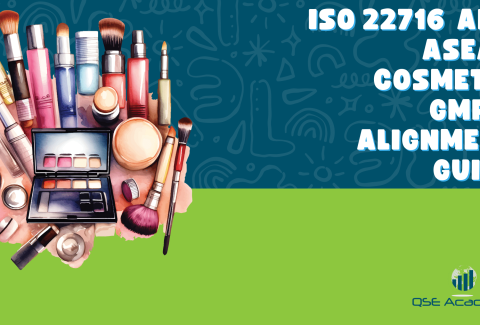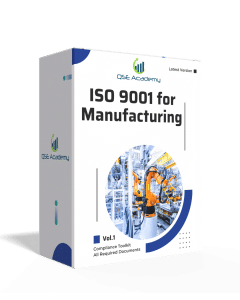Overview of ISO 22716 Requirements
Last Updated on October 24, 2025 by Hafsa J.
Overview of ISO 22716 Requirements
Let’s start by breaking down what ISO 22716 is all about. If you’re in the cosmetics industry, you’ve likely heard about it—but what does it actually mean and why is it so important? In simple terms, ISO 22716 refers to the international standard for Good Manufacturing Practices (GMP) in cosmetics. It’s a set of guidelines that outlines the best practices for producing safe, high-quality cosmetic products.
Think of ISO 22716 as a recipe for success in the cosmetics world. It’s not just about the ingredients that go into the products, but the entire process—from raw materials to packaging and everything in between. By following these guidelines, you ensure that every step in production meets the highest safety and quality standards, and that your products are reliable for consumers.
Definition and Purpose
So, what does the standard aim to achieve? At its core, ISO 22716 is designed to ensure that cosmetics are manufactured in a way that consistently meets quality standards and safety requirements. It’s about minimizing risks like contamination, errors in production, and inconsistent product quality. By following ISO 22716 requirements, manufacturers can produce cosmetics that are not only effective but also safe for consumers.
This is especially important because, let’s face it—cosmetics are products we put directly on our skin, so the stakes are high. ISO 22716 helps you create products that are trustworthy and that won’t put your customers at risk. Plus, it shows that you take quality and safety seriously, which builds trust with your audience and helps you stand out in a competitive market.
The Role of ISO 22716 in Quality Assurance
ISO 22716 isn’t just a box to check off for compliance—it’s an essential part of your quality assurance (QA) system. When you adhere to ISO 22716 requirements, you’re ensuring that every batch of products you produce is made with the highest possible consistency and safety.
This includes things like:
- Personnel training to ensure everyone knows what’s expected of them.
- Hygiene and sanitation standards to avoid contamination.
- Proper equipment maintenance so you’re always working with reliable machinery.
By implementing these standards, you can rest assured that your products are up to par, every time.
In the next section, we’ll dive deeper into the specific ISO 22716 requirements for cosmetic manufacturers, from personnel and training to premises and equipment. Ready to keep going? Let’s move ahead!
Key ISO 22716 Requirements for Cosmetics Manufacturers
Now that we have a basic understanding of what ISO 22716 is and why it’s important, let’s dive into the specific ISO 22716 requirements that cosmetic manufacturers need to follow. These guidelines are designed to help you establish a safe, efficient, and high-quality production process. So, whether you’re just starting your journey toward certification or need a quick refresher, let’s break down the key components of ISO 22716.
Personnel and Training
One of the first things the ISO 22716 requirements emphasize is the importance of well-trained staff. After all, your employees are the ones implementing these guidelines day in and day out, so it’s essential that they know exactly what’s expected of them.
This starts with proper training. Every person involved in the manufacturing process—whether in production, quality control, maintenance, or cleaning—needs to be well-versed in GMP practices. But training doesn’t stop once the initial onboarding is complete. Ongoing training is key to maintaining consistent practices and staying compliant with any updates or changes in the standards.
To help you stay on track, the ISO 22716 requirements highlight:
- Regular refresher courses to keep everyone sharp.
- Documentation of training activities, including dates, topics, and attendees.
- Ensuring that only qualified personnel are responsible for specific tasks, especially those that affect product safety and quality.
When your team is trained and well-informed, it makes the entire manufacturing process run much more smoothly, and it ensures everyone is on the same page when it comes to compliance.
Premises and Equipment
The next set of ISO 22716 requirements focuses on the physical space where cosmetics are made—your facilities. Keeping your premises clean and organized is critical for ensuring product safety and quality. Let’s break down a few of the key factors that ISO 22716 highlights:
- Cleanliness and Sanitation:
Your facility must be kept in top-notch condition to avoid contamination. This means having a regular cleaning schedule and ensuring that surfaces, tools, and equipment are properly sanitized after each use. - Facility Layout:
ISO 22716 requirements also emphasize the importance of having a good layout. This includes things like separating areas for raw materials, finished products, and waste to prevent cross-contamination. Think of it like setting up your kitchen—ingredients need to be stored and processed in separate areas to keep everything safe and organized. - Equipment Maintenance:
The equipment you use to manufacture cosmetics must be in good working order. ISO 22716 requires regular maintenance and calibration of machines to ensure everything functions properly. It’s essential that you document all maintenance activities, so if an issue arises, you can quickly identify whether equipment failure contributed to any problems.
By keeping your facility clean and your equipment maintained, you’re not only meeting the ISO 22716 requirements but also reducing the risk of contamination or defects in your products.
Raw Materials and Packaging
The materials you use in production and the packaging you choose for your products also fall under the ISO 22716 requirements. Here’s why it matters:
- Raw Materials:
ISO 22716 stresses the importance of sourcing raw materials from reliable, compliant suppliers. These materials need to be stored properly to maintain their integrity and prevent contamination. Make sure your inventory is organized and all materials are clearly labeled. - Packaging:
Packaging plays a huge role in preserving the quality and safety of cosmetic products. ISO 22716 requirements dictate that packaging must be suitable for the product, preventing contamination and protecting it from external factors like moisture, air, or light.
By adhering to these guidelines, you can ensure that both the raw materials and packaging used in your products meet the highest standards.
Why These Requirements Matter
Each of these ISO 22716 requirements serves to build a strong foundation for your cosmetic manufacturing process. From training your team to maintaining your facilities, every detail plays a role in ensuring product quality, safety, and consistency. By following these guidelines, you’re setting yourself up for success—not just in passing audits but in creating a product that your customers can trust.
In the next section, we’ll dive into the crucial topic of document control and record-keeping—another critical aspect of ISO 22716 requirements that helps ensure traceability and accountability in your manufacturing process. Let’s keep going!
Document Control and Record Keeping
When it comes to ISO 22716 requirements, having proper documentation and record-keeping systems in place is absolutely essential. Why? Because keeping accurate, up-to-date records isn’t just about compliance—it’s about creating transparency and accountability in every step of the production process. These records help ensure you can trace every product back to its origin, proving that each one was made according to the highest standards.
Let’s take a closer look at how ISO 22716 requirements help with documentation and why it matters for your business.
Importance of Accurate Documentation
Think of documentation as your business’s memory—it helps you remember every detail of your production process. From raw material sourcing to the final product, ISO 22716 requirements emphasize the need for thorough documentation. Not only does it provide proof of compliance, but it also helps you identify and resolve potential issues quickly.
Here’s why it matters:
- Traceability: If something goes wrong with a product, you can track it back to its origin—whether that’s a specific batch of raw materials or an issue with equipment.
- Consistency: Accurate records show that you’re following the same processes consistently, every time. This ensures that your products are always made to the same high standards.
- Audit Preparedness: Having organized and up-to-date records makes it easier to pass audits and inspections without stress or confusion.
ISO 22716 requirements are all about making sure that all documentation is not only complete but also easily accessible when needed. This could be anything from batch records and cleaning logs to employee training certifications and maintenance reports.
Creating a Document Control System
To meet ISO 22716 requirements, you’ll need a solid document control system in place. But don’t worry—it doesn’t have to be complicated! A good system ensures that all documentation is organized, secure, and easily retrievable.
Here’s how you can create one:
- Define Clear Procedures: Start by establishing how documents will be created, reviewed, and approved. This helps ensure consistency across your team.
- Centralized Storage: Store your documents in one place (digital or physical), so everyone knows where to find them. Make sure it’s a system that allows for easy updates and retrieval.
- Version Control: Keep track of document revisions, so you always know the most current version is being used. This prevents confusion and errors.
- Regular Reviews: Schedule periodic reviews of your documents to ensure they’re still relevant and in compliance with ISO 22716 requirements.
Having a solid document control system helps keep everything organized and ensures that when an auditor requests a document, you can provide it without any hassle.
Key Documents to Keep in Order
There are several types of documents you’ll need to manage to comply with ISO 22716 requirements. Here are the most important ones:
- Standard Operating Procedures (SOPs): These guide your team through the correct processes and practices. They should cover everything from production to sanitation.
- Training Records: These documents show that your staff has received the proper training and are qualified to do their jobs.
- Batch Records: These are the most critical for tracking the production of each product batch, ensuring that everything is in compliance with the standards.
- Cleaning and Maintenance Logs: These documents track cleaning and maintenance activities, showing that equipment and facilities are properly cared for.
- Quality Control Records: Keep track of tests, inspections, and any corrective actions taken to maintain product quality.
These records don’t just help with compliance—they also help improve your operations by providing a clear picture of your processes and highlighting areas for improvement.
Why Document Control is Essential
The ISO 22716 requirements for documentation and record-keeping are about more than just meeting regulatory standards—they’re about ensuring that your processes are transparent, efficient, and reliable. When you maintain organized, thorough records, you create a foundation of trust with both regulators and consumers. Plus, it makes your life a lot easier when it comes time for an audit!
By having your documentation in order, you’re not just preparing for the next inspection—you’re improving your internal processes and making your business more efficient in the long run.
In the next section, we’ll look at how internal and external audits fit into the ISO 22716 requirements and how they help ensure ongoing compliance. Ready to dive in? Let’s keep going!
Audits and Inspections
When it comes to ISO 22716 requirements, audits are an essential part of ensuring that everything in your cosmetic manufacturing process is running as it should. Both internal and external audits play a crucial role in maintaining compliance with GMP standards and ensuring the quality and safety of your products. Let’s explore how audits work, why they’re important, and how to prepare for them.
Internal Audits
Before an official external audit, it’s highly recommended to conduct internal audits as part of your ISO 22716 requirements. Think of internal audits as a rehearsal before the main performance. They allow you to identify any issues, fix them before they become bigger problems, and make sure everything is running smoothly.
Here’s why internal audits matter:
- Proactive Compliance: By conducting regular internal audits, you can catch any non-compliance issues early, so you don’t get blindsided during the official audit.
- Consistency: They ensure that your team is consistently following the ISO 22716 requirements. When internal audits are done correctly, you’ll have a better understanding of your operation’s overall effectiveness.
- Improvement Opportunities: Audits are a great opportunity to evaluate your systems and processes. Even if everything is compliant, audits can highlight areas for improvement that may have otherwise been overlooked.
How to Conduct an Internal Audit:
- Set a Schedule: Decide how often audits should be performed (quarterly or biannually is a good starting point).
- Use a Checklist: Make sure you’re reviewing everything from sanitation practices to equipment maintenance. This checklist should align with the ISO 22716 requirements.
- Get Feedback from Employees: Invite your team members to provide feedback about the processes—they’re often the ones who spot inefficiencies or gaps.
- Document Everything: Keep a record of your findings and corrective actions. This shows that you’re committed to continuous improvement.
External Audits
Once your internal audits are in place and you feel confident about your operations, it’s time to prepare for external audits. These are the official inspections that will confirm your compliance with ISO 22716 requirements and determine whether you’re eligible for certification.
Why External Audits Are Important:
- Certification Validation: External audits validate that you’ve met all the necessary GMP standards. If you pass, you’ll receive certification, which is essential for entering new markets and gaining consumer trust.
- Regulatory Compliance: External auditors will check if your operations comply with local regulations and international standards. This is particularly important for selling in markets like the European Union, where cosmetic manufacturing is highly regulated.
- Objective Feedback: External auditors offer an unbiased perspective on your processes and systems. Their insights are valuable for improving your operations and ensuring that your company is following industry best practices.
Preparing for an External Audit:
- Review Internal Audit Findings: Before the official audit, review the results from your internal audits to ensure everything is in order.
- Ensure Documentation Is Up-to-Date: Double-check that all records, from employee training logs to cleaning schedules, are complete and accurate. This is key to passing the audit.
- Ensure Your Team is Ready: Prepare your team for the audit by ensuring they know the ISO 22716 requirements and are clear on their responsibilities. They should be ready to answer questions and provide any requested documentation.
Why Audits Matter for ISO 22716 Compliance
Audits, both internal and external, are integral to meeting ISO 22716 requirements and ensuring continuous compliance. They provide an ongoing check on your processes, helping you maintain a high level of quality and safety. More importantly, they offer opportunities for improvement, allowing you to address potential issues before they become problems.
Through regular audits, you ensure that your business isn’t just meeting the minimum requirements—it’s constantly striving to improve and maintain high standards of operation.
Next, we’ll take a look at how meeting ISO 22716 requirements can not only help with compliance but also improve operational efficiency, reduce costs, and give you a competitive advantage. Ready to continue? Let’s move on!
Benefits of Meeting ISO 22716 Requirements
By now, you have a good understanding of what ISO 22716 requirements are and why they’re so important. But let’s take a step back and think about how meeting these requirements can benefit your business beyond just compliance. Sure, meeting GMP standards is crucial, but the benefits of doing so extend far beyond simply ticking the boxes for certification. Let’s dive into how meeting ISO 22716 requirements can improve product quality, increase consumer trust, reduce costs, and even open up new opportunities for your business.
Enhanced Consumer Confidence
One of the most significant benefits of meeting ISO 22716 requirements is the boost it gives to your brand’s reputation. Consumers are more informed than ever, and when they see that your products are manufactured in compliance with GMP standards, they know they can trust your brand.
Why does this matter?
- Safe and reliable products: Customers expect that the products they use are safe and made with the highest standards of quality. ISO 22716 requirements ensure that your manufacturing process focuses on safety and consistency, which boosts consumer confidence.
- Word-of-mouth recommendations: When customers trust your products, they’ll recommend them to others. Word-of-mouth advertising is priceless and can significantly impact your sales and brand reputation.
Improved Product Quality
Another clear benefit of meeting ISO 22716 requirements is the improvement in product quality. GMP standards ensure that your products are consistently made to the same high-quality standards, reducing variations and defects.
Here’s how it works:
- Standardized processes: ISO 22716 sets out clear, standardized procedures for everything from raw material handling to final product packaging. This consistency leads to products that are uniform in quality.
- Quality control measures: Regular checks and balances ensure that products meet required specifications and that any issues are addressed before they reach the consumer.
The result? High-quality products that satisfy your customers, reduce complaints, and promote repeat business.
Regulatory Compliance Made Easier
As a cosmetic manufacturer, staying compliant with local and international regulations is critical. ISO 22716 requirements make compliance easier by providing a clear framework for meeting the standards set by regulatory bodies worldwide.
- Fewer penalties and fines: Adhering to GMP standards ensures that you avoid costly penalties and product recalls. Compliance with ISO 22716 is recognized internationally, making it easier to navigate regulations in different markets.
- Smoother market entry: Many countries require GMP certification before allowing the sale of cosmetics. Whether you’re looking to sell in the European Union, the United States, or Asia, ISO 22716 certification helps you meet the regulatory requirements for these regions and open doors to new markets.
In a world of ever-tightening regulations, compliance isn’t just a good practice—it’s necessary for staying competitive and avoiding costly mistakes.
Operational Efficiency and Cost Savings
You might not expect it, but meeting ISO 22716 requirements can also improve your operational efficiency and help you save money. By adhering to GMP guidelines, you streamline your processes and reduce waste, both of which lead to cost savings.
Here’s how:
- More efficient processes: ISO 22716 promotes standardized and organized workflows, reducing inefficiencies. This means fewer mistakes, less downtime, and faster production.
- Reduced waste: By implementing strict controls over raw material usage and minimizing errors, you reduce the amount of wasted materials, which in turn saves you money.
- Lower risk of recalls: By ensuring that every step of the manufacturing process is documented and compliant, the risk of a costly product recall is significantly reduced.
These cost savings add up over time and contribute to improved profitability, making your business more sustainable and competitive.
A Competitive Edge in the Market
Lastly, ISO 22716 requirements can give your business a distinct competitive advantage. In a crowded cosmetics market, standing out is key, and certification gives you a leg up.
- Differentiating your brand: When your products are GMP-certified, they stand out as trustworthy, high-quality options. Consumers are more likely to choose your brand over competitors when they know you adhere to stringent manufacturing standards.
- Attracting new partnerships: Retailers and distributors are more likely to do business with manufacturers that are GMP-certified because it reduces the risk of non-compliance or product quality issues. This opens up new business opportunities and can help expand your market reach.
When you meet ISO 22716 requirements, you’re not just ensuring your products are safe and compliant—you’re positioning your brand for long-term success and growth.
The Bottom Line
In summary, the benefits of meeting ISO 22716 requirements are far-reaching. From improving product quality and gaining consumer trust to making your operations more efficient and opening up new market opportunities, the advantages are clear. Adopting these standards is a proactive step toward building a strong, reputable, and competitive brand.
In the final section, we’ll wrap up everything you need to know about ISO 22716 requirements and offer some final tips on how to get started with certification. Let’s finish strong!
Conclusion: The Long-Term Advantages of Meeting ISO 22716 Requirements
We’ve covered a lot of ground when it comes to the ISO 22716 requirements, and by now, you should have a solid understanding of why they’re so essential for cosmetics manufacturers. From improving product safety and quality to enhancing customer trust and helping you stay compliant with global regulations, the benefits of meeting ISO 22716 requirements are clear and impactful.
A Step Toward Sustainable Growth
As you move forward with ISO 22716 certification, remember that it’s not just about meeting regulatory standards. It’s about building a foundation for sustainable growth and long-term success. By implementing GMP practices, you’re creating a system that helps your business thrive in a competitive industry.
When you follow the ISO 22716 requirements, you’re setting yourself up for continuous improvement. It’s not a one-time achievement but an ongoing process that ensures you remain at the forefront of industry standards. Over time, these efforts will pay off in ways that go beyond product quality, helping you streamline operations, increase profitability, and strengthen your brand.
Why ISO 22716 Matters for Your Business
The real value of ISO 22716 requirements comes from the peace of mind they offer. When you know your operations are compliant with international standards, you reduce the risks of contamination, product recalls, and non-compliance issues. You also give your customers confidence that the products they’re purchasing are safe, effective, and high-quality.
Adopting ISO 22716 is more than just about avoiding fines or audits—it’s about building a culture of quality and reliability that resonates with consumers and stakeholders. This commitment to excellence strengthens your reputation, improves customer loyalty, and positions your business for long-term growth.
Ready to Get Started?
Now that you understand the importance of ISO 22716 requirements, it’s time to take the next step. Whether you’re just beginning to explore GMP certification or you’re already on your way, implementing these practices in your business will set you up for success in the cosmetics industry. So, gather your team, review your processes, and start working toward ISO 22716 certification.
The benefits are well worth the effort—and your customers, employees, and business partners will thank you for it.
Now that you’re equipped with all the knowledge about the ISO 22716 requirements, it’s time to turn this into action and begin your journey toward GMP certification. Ready to get started? Let’s do this!
Whether it’s ISO 9001, ISO 22000, or the cosmetics-focused ISO 22716, I’ve spent my career I’m not here to call myself an expert—I prefer “enthusiast” because I truly love what I do. When I’m not writing about standards, you’ll probably find me playing Piano 🎹, connecting with people, or diving into my next big project💫. I’m an engineer specialized in the food and agricultural industry
make ISO standards less intimidating and more approachable for everyone.
turning complex jargon into clear, actionable steps that businesses can actually use.
There’s something incredibly rewarding about helping people navigate food safety and quality management systems
in a way that feels simple, practical, and even enjoyable.
I have a Master’s in QHSE management and over 12 years of experience as a Quality Manager
I’ve helped more than 15 companies implement ISO 9001, ISO 22000, ISO 22716, GMP, and other standards
My clients include food producers, cosmetics manufacturers, laboratories, and service companies
I believe quality systems should be simple, useful, and efficient.
Looking for More Resources on ISO 22716?
If you found this article helpful, explore our premium resources designed to help you achieve ISO 22716 certification efficiently:
- Complete Documentation Package for ISO/IEC 22716 2017: Get all the essential templates and documents you need for fast, easy implementation.
- Online Course on ISO/IEC 22716 2017 : Enroll in our comprehensive training to master the key concepts and practical steps toward certification.
- ISO/IEC 22716 2017 Checklist: Download our detailed checklist to ensure you’ve covered every step of the process.
These resources are tailored to meet your needs and ensure a smooth certification journey. Explore them today and get one step closer to success!











